Straightening crooked teeth is also possible for adults. We present 6 methods that will help you achieve a beautiful smile.
Correcting teeth in adults is a topic that is of interest to more and more people.
Because a healthy smile stands for self-confidence and well-being.
And contrary to the widespread assumption that teeth can only be corrected in adolescence, there are now a variety of methods that also help adults to have straight teeth.
| Get 150 € discount on your dental correction! |

Book a consultation appointment now at a nearby DrSmile partner practice and find out if teeth straightening with aligners is right for you.
The appointment is completely non-binding and does not involve any costs.
With the code “THATSMILE150” you will receive 150 € discount on the treatment.
Have you landed on this article as part of your search for “straightening crooked teeth”?
Perfect, you’ve come to the right place – because nobody needs to be afraid of braces these days.
We will introduce you to various methods that can help you fulfill your dream of a beautiful smile at any age.

Straighten crooked teeth: These 6 methods promise a more beautiful smile
Anyone who researches the topic of “straightening crooked teeth” will quickly discover that teeth straightening is now accessible to everyone.
There are methods in different price categories, for varying degrees of malocclusion and discrete options.
Here we show you 6 ways to a radiant smile:
1. classic metal braces
Traditional (metal) braces are also popular with adults. It is also known as fixed braces.
Metal braces consist of brackets and wires that gradually move the teeth into the desired position.
Despite its visibility, many adults choose this method due to its reliability and effectiveness.
What you should know about classic braces:
- Effectiveness in correcting teeth: Metal braces are considered to be particularly effective in treating a variety of misaligned teeth and bite problems. They are suitable for complex corrections such as closing gaps between teeth, crowding and malocclusions such as overbite, overbite, open bite, underbite, deep bite, crossbite or overbite.
- Adaptability: A classic metal brace is individually adapted to the patient’s needs. It consists of small metal brackets that are bonded to the teeth and connected with special wires. These wires are regularly adjusted by the orthodontist to gradually move the teeth into the desired position.
- Duration of treatment: The duration of treatment varies depending on the severity of the deformity and individual circumstances. As a rule, treatment with metal braces lasts between one and three years. Regular follow-up visits are crucial for the success of the treatment.
- Visibility and aesthetics: Metal braces are clearly visible due to the metal brackets and wires. For some patients, this can be a challenge for esthetic reasons. However, nowadays there are discreet or colored elastic bands to design the braces as desired.
- Care and hygiene: Caring for metal braces requires care, as food debris can easily get stuck in the brackets and wires. Good oral hygiene is therefore essential to prevent tooth decay and gum disease. Special toothbrushes and dental floss are helpful to keep the teeth and braces clean.
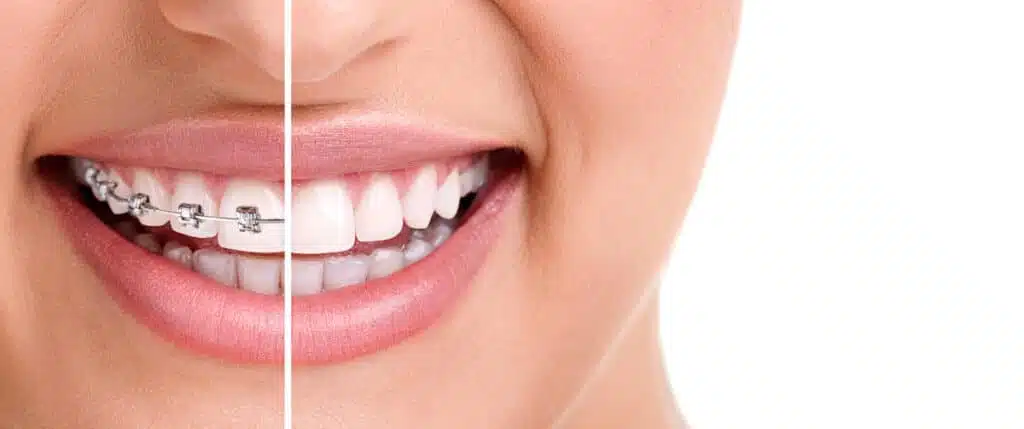
2. invisible braces (aligners)
DrSmile is a prominent example here and one of the leading providers in Germany.
This method uses a series of clear, removable splints that fit over the teeth and gradually shift them.
They are virtually invisible and hardly interfere with everyday life. Perfect for anyone who wants discreet tooth correction.
Tip: Our recommendation for invisible braces (aligners) is DrSmile. Click through our further DrSmile articles here with all the important information about the aligner provider.
DrSmile has already produced more than one million aligners and can look back on over 150,000 completed tooth corrections.
DrSmile’s invisible aligners are already available in over 100 partner practices throughout Germany.
The company also offers not only a good price-performance ratio but also a satisfaction guarantee in case you are not one hundred percent happy with the result.
| Get 150 € discount on your dental correction! |

Book a consultation appointment now at a nearby DrSmile partner practice and find out if teeth straightening with aligners is right for you.
The appointment is completely non-binding and does not involve any costs.
With the code “THATSMILE150” you will receive 150 € discount on the treatment.
What you should know about invisible braces (aligners):
- Discretion and aesthetics: Aligners consist of transparent plastic trays that sit almost invisibly on the teeth. This makes them a popular choice for adults who prefer an inconspicuous treatment method.
- Removability: A major advantage of aligners is that they are removable. This makes eating, dental care and cleaning the splints easier. However, it is recommended to wear the aligners for at least 20 to 22 hours a day to achieve the best effect.
- Treatment plan and duration: Treatment with aligners is based on a customized plan using a series of aligners that are changed every two weeks. The total duration of treatment varies depending on the complexity of the misaligned teeth, but is often between six months and two years.
- Limitations in use: Although aligners are effective for a variety of malocclusions, they are not suitable for all cases. Severe malocclusions, especially those that require significant movement of the molars or complicated bite corrections, may require traditional braces or a combination of different treatment methods.
- Comfort and adjustment: Many users report that aligners are more comfortable compared to traditional braces because there are no metal parts that can irritate the gums or the inside of the cheeks. Nevertheless, there may be a slight feeling of pressure at the beginning of each new splint as the teeth are moved into the new position.

3. lingual braces (lingual technique)
With this method, the brackets are attached to the inside of the teeth, making them almost invisible from the outside.
Lingual braces are a discreet alternative to traditional braces.
However, it can initially cause slight discomfort and impair speech.
What you should know about lingual braces (lingual braces):
- Invisibility: The most outstanding feature of lingual braces is their invisibility. The brackets and wires are attached to the inside of the teeth, i.e. towards the tongue area. This makes them almost invisible from the outside, which is particularly attractive for adult patients who value aesthetics.
- Individual fitting: Lingual braces are made individually for each patient. The brackets are custom-made based on impressions of the dentition to ensure an optimal fit and effectiveness. This customized production distinguishes them from other braces.
- Acclimatization phase and comfort: Due to their position close to the tongue, getting used to lingual braces can be challenging at first. Patients often report an unfamiliar feeling when speaking and eating as well as slight irritation of the tongue in the first few days or weeks after fitting.
- Effectiveness in complex cases: Despite their hidden position, lingual braces are effective for a wide range of misaligned teeth. They are particularly suitable for complex corrections and can be used in cases where other invisible correction methods such as aligners reach their limits.
- Care and hygiene: The care of lingual braces requires special attention due to their position. Thorough cleaning is necessary to remove food debris and maintain oral hygiene. Special dental care products and oral irrigators can help to keep the teeth and braces clean.
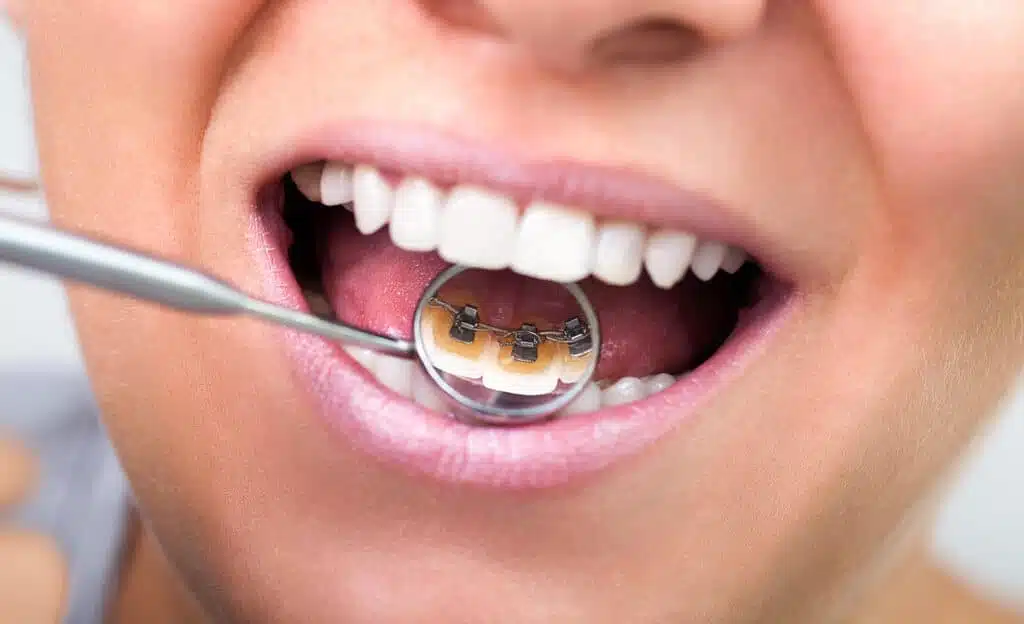
4. orthodontic operations
In severe cases or after an accident, orthodontic surgery may be necessary.
This involves surgically correcting misaligned jaws, which is often combined with subsequent braces treatment.
Following the operation, classic metal braces are usually used.
What you should know about orthodontic surgery:
- Treatment of severe malocclusions: Orthodontic surgery is generally used for severe misalignments that cannot be corrected by braces or other orthodontic appliances alone. Such malocclusions can cause both aesthetic and functional problems, such as difficulties in chewing or speaking.
- Cooperation between orthodontists and surgeons: The operations require close cooperation between orthodontists and oral and maxillofacial surgeons. Preparatory orthodontic treatment is often carried out to align the teeth correctly for the operation. Surgical correction is usually followed by further orthodontic treatment to fine-tune the position of the teeth.
- Different types of surgery: There are different types of orthodontic surgery, including osteotomy, in which sections of bone in the jaw are separated and repositioned, and genioplasty, a form of chin correction. The type of procedure depends on the type and severity of the deformity.
- Recovery phase: After orthodontic surgery, there is a recovery phase during which swelling and discomfort may occur. Complete healing and achievement of the final result can take several weeks to months. Careful follow-up care and, if necessary, adjustments to the diet are required during this time.
- Long-term results: Orthodontic surgery can lead to significant and long-term improvements in functionality and esthetics. They can not only improve the appearance, but also solve functional problems caused by misalignments.
| Get 150 € discount on your dental correction! |

Book a consultation appointment now at a nearby DrSmile partner practice and find out if teeth straightening with aligners is right for you.
The appointment is completely non-binding and does not involve any costs.
With the code “THATSMILE150” you will receive 150 € discount on the treatment.
5. veneers (veneers)
Dental veneers are thin veneers that are applied to the front of the teeth to improve their appearance.
They are a quick solution for various cosmetic problems, but not a real tooth correction in the orthodontic sense.
Some dentists criticize veneers because part of the healthy tooth enamel has to be removed in order to apply them.
What you should know about veneers:
- Aesthetic improvement: Veneers are mainly used for aesthetic reasons. They can correct a variety of cosmetic issues, such as discoloration, slight misalignment, uneven tooth sizes, wear and tear or cracks in the teeth.
- Materials: Veneers are typically made of porcelain or composite materials. Porcelain veneers are popular because they are durable and offer natural dental esthetics. Composite veneers are often less expensive and can be fabricated more quickly, but are less durable than porcelain.
- Fitting process: The fitting of veneers usually requires two to three visits to the dentist. This includes the consultation, the fitting of the teeth, the fabrication of the veneers and finally the application to the teeth. To adjust the teeth, a thin layer of enamel often has to be removed to make room for the veneers.
- Lifespan and care: Veneers generally last between 7 and 15 years, depending on the material and care. Good oral hygiene, avoiding hard biting and regular dental check-ups contribute to the longevity of the veneers.
- Irreversibility: As part of the enamel often has to be removed to apply veneers, the process is usually irreversible. It is therefore important to seek comprehensive advice before the procedure and ensure that veneers are the right choice for your personal needs.
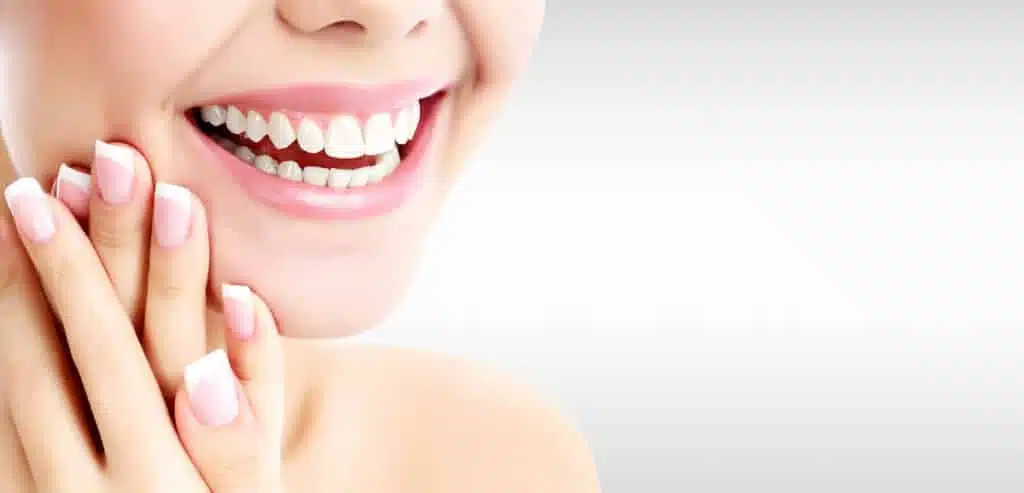
6. retainer
Retainers are only used after the teeth have been successfully corrected. Nevertheless, we do not want to leave them unmentioned in this list.
After successful correction, the use of retainers is important to keep the teeth in their new position.
There are fixed and removable models that are only worn at night or permanently.
What you should know about retainers:
- Purpose of retainers: The main purpose of a retainer is to stabilize the teeth in their new position after orthodontic treatment. Without a retainer, the teeth can move back into their original position, which would ruin the success of the orthodontic treatment.
- Types of retainers: There are basically two types of retainers – fixed and removable. Fixed retainers consist of a thin wire that is permanently attached to the back of the teeth. Removable retainers are usually made of a combination of wire and plastic and can be removed for eating, drinking and dental care.
- Wearing time: The wearing time of a retainer can vary. Some people only need to wear them at night, while others need them for longer periods during the day. The exact recommendation depends on the individual situation and the instructions of the orthodontist.
- Care of retainers: The care of retainers is crucial for their effectiveness and longevity. Removable retainers should be cleaned regularly to prevent bacteria build-up and bad breath. Fixed retainers require careful cleaning during daily dental care to prevent plaque and caries.
- Long-term use: In some cases, the orthodontist may recommend wearing the retainer long-term or even permanently to ensure the stability of the tooth position. This is particularly common in patients who undergo orthodontic treatment as adults.

Conclusion on the subject of straightening crooked teeth
Each method of correcting teeth has its advantages and disadvantages, whereby the individual needs and preferences, the condition of the teeth and the orthodontist’s recommendation should play a role.
Modern orthodontic techniques offer a range of options that are effective, esthetic and tailored to the needs of adults.
So anyone of any age can find their way to a more beautiful smile.
A personal tip from the editor: I myself use invisible braces (aligners) from DrSmile and am now in the retention phase.
The treatment went very well and I can definitely recommend DrSmile for your discreet teeth correction.
You can find my detailed DrSmile experiences in this article.
| Get 150 € discount on your dental correction! |

Book a consultation appointment now at a nearby DrSmile partner practice and find out if teeth straightening with aligners is right for you.
The appointment is completely non-binding and does not involve any costs.
With the code “THATSMILE150” you will receive 150 € discount on the treatment.
FAQs on the topic of “straightening crooked teeth”
Here we answer a few of the most frequently asked questions on the subject of “straightening crooked teeth”.
Is it too late to have my teeth corrected as an adult?
No, it’s never too late. Tooth corrections can be carried out at any age. Modern techniques and treatment methods also offer effective ways of correcting teeth for adults.
Straighten crooked teeth: What types of braces are available for adults?
For adults, there are different types of braces: traditional metal braces, ceramic braces, invisible aligners like DrSmile, and lingual braces that attach to the inside of the teeth.
Are tooth corrections in adults painful?
While teeth straightening can initially cause discomfort, it is not usually very painful. The slight pressure and discomfort at the beginning of a new treatment phase usually subside after a few days.
How do I look after my teeth if I have braces?
Thorough oral hygiene is essential. This includes regular brushing after every meal, the use of dental floss or an oral irrigator and regular cleaning of braces to prevent plaque build-up and dental problems.
Straightening crooked teeth: Are braces for adults more expensive than for children?
The costs for braces are similar for adults and children, but can vary depending on the type and duration of treatment. Some specialized or more aesthetically unobtrusive options can be more expensive.
How long does tooth correction take in adults?
The duration of treatment varies depending on the complexity of the deformity and the chosen treatment method. In general, tooth correction in adults can take between 6 months and several years.
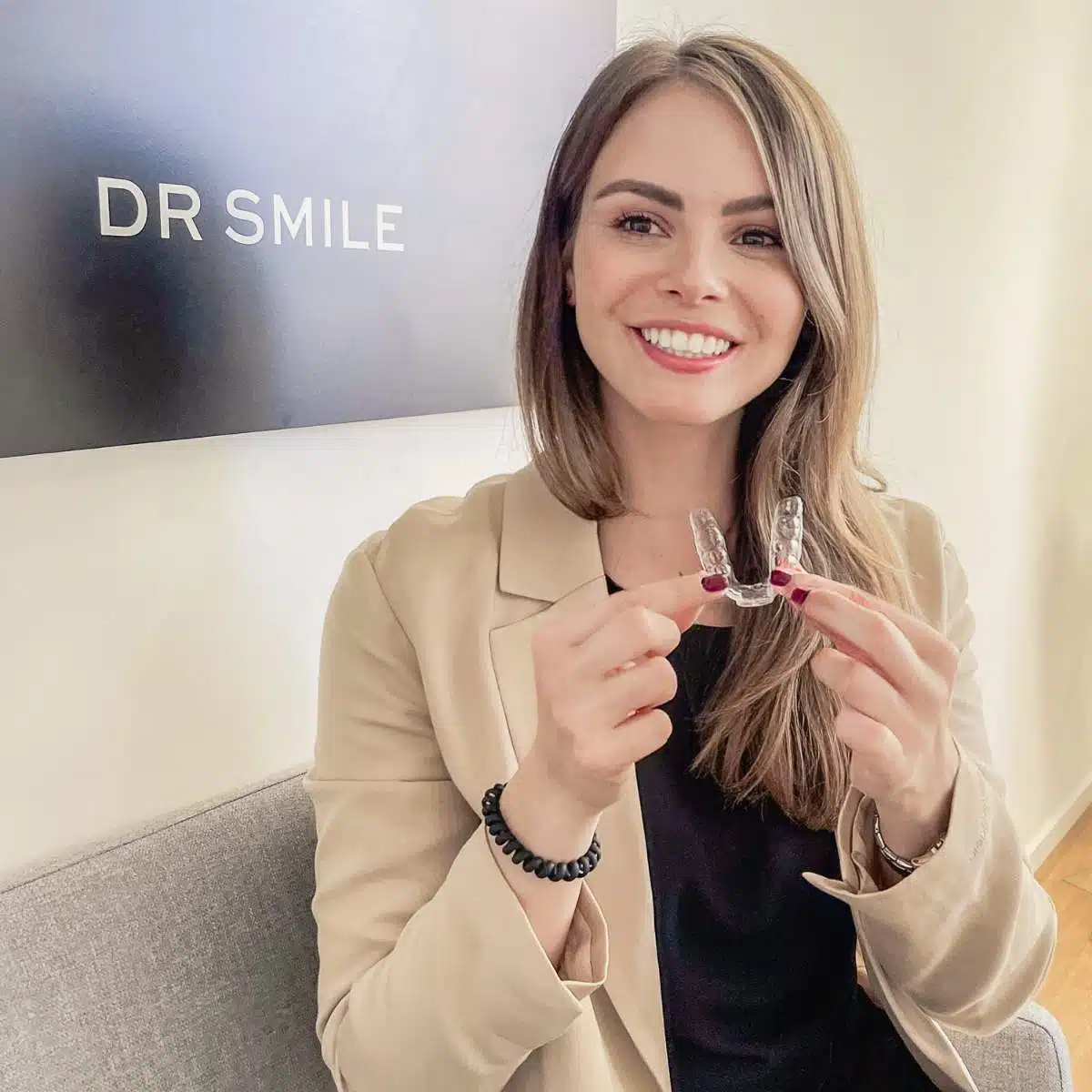
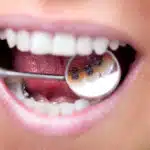

Leave a Reply